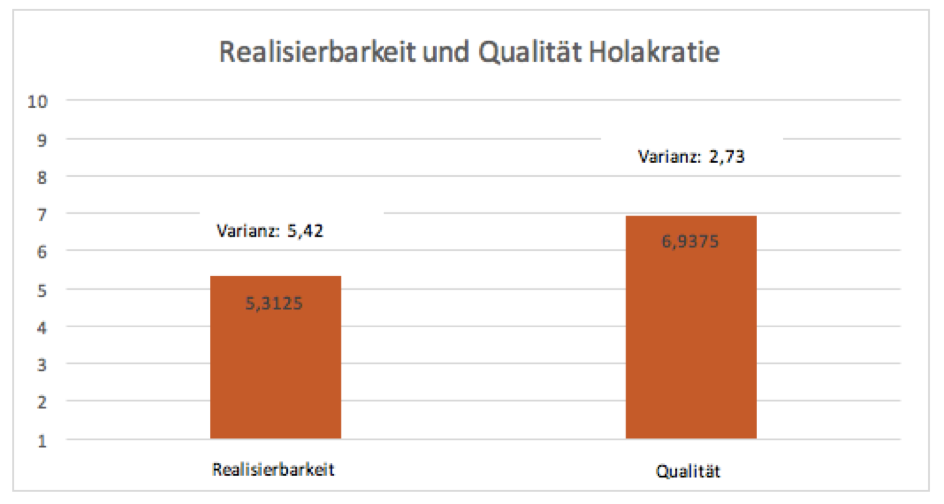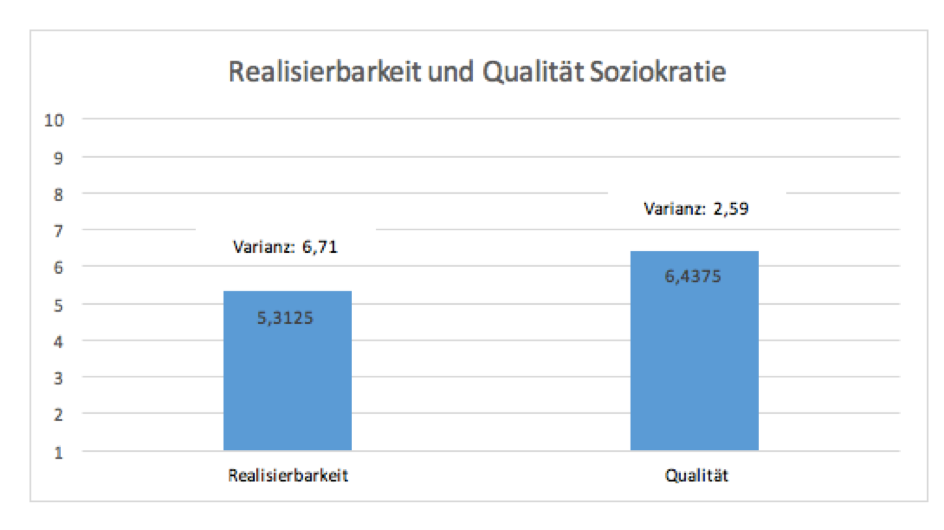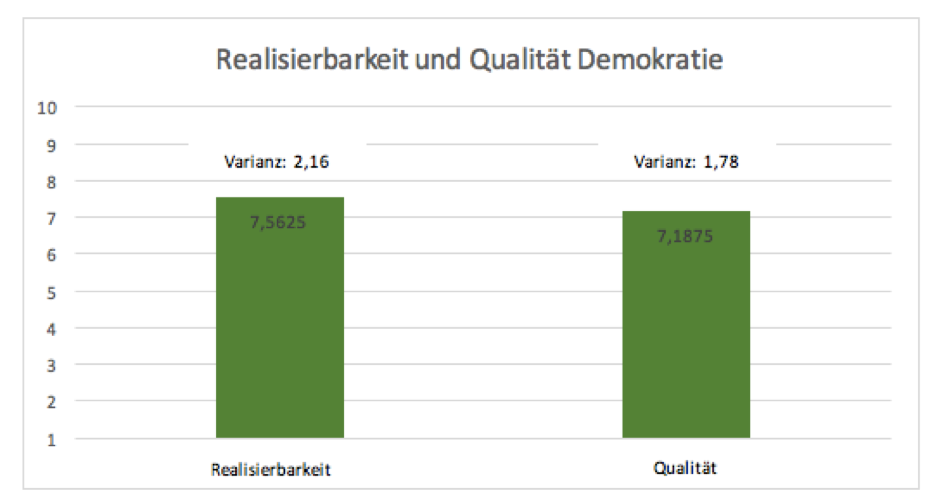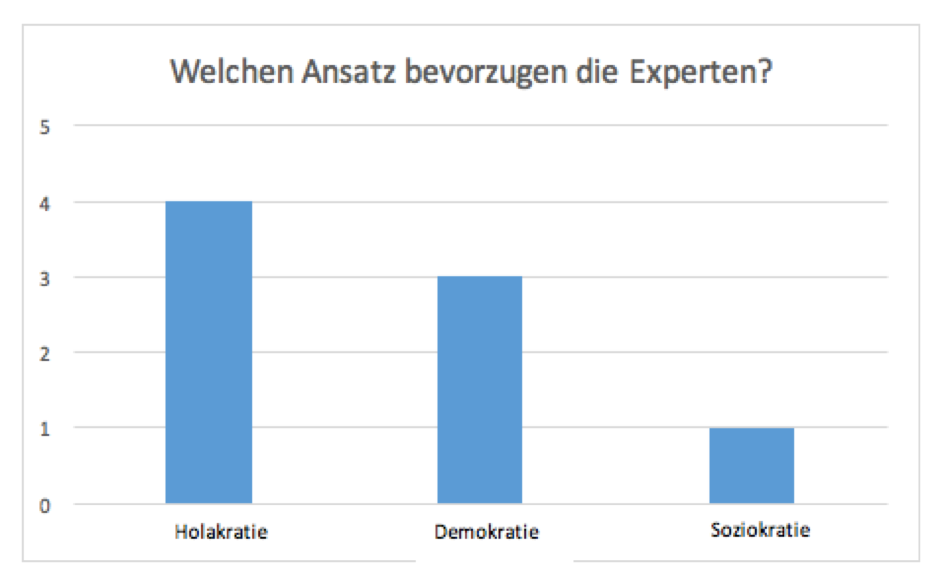Increasing digitization is currently one of the greatest challenges that companies have to face. However, this now affects the entire value chain of a company, creating new forms of production and work. The feasibility in classic corporate forms of organization is controversial, but so-called new, evolutionary organizational concepts could represent a solution. In my bachelor thesis I examined the approaches of holacracy, sociocracy and democracy in order to examine their meaning in the context of companies. For this purpose, I conducted expert interviews with selected managers and employees in order to examine and compare the quality and feasibility.
The following are the results of the bachelor thesis with the topic: „Companies in transition – holacracy, sociocracy or democracy“. First I want to fundamentally define the three concepts. But this is done in a very shortened form in this blog article.
What is holacracy?
An operating system for organizations
Brian Robertson developed holacracy about 10 years ago in a small start-up company in the USA. The main sources of influence were methods from agile software development and sociocracy. In order to clarify a potential question beforehand, both the terms holocracy and holacracy are used in German literature.
For the first time, a holacracy requires a fundamentally different way of thinking and a certain understanding of human nature by its individuals within the organization. People are thinking, sensitive and creative beings who definitely need their freedom to work optimally and productively. Furthermore, there should be a strict rethink in daily work. Instead of being planned and controlled, it should now be noticed and responded to. In view of today’s volatile world, due to the growing complexity and economic instability, a constant adjustment to the current situation must be made. Strict advance planning, central control and deviations from corporate strategy are now less timely.
Distribution of authority and basic organizational structure
In a holacracy, “the distribution of power is not achieved simply by taking power from a leader and handing it over to someone else or a group. Instead, the place of power is no longer a person at the top, but a process (Robertson, 2015, p.20f.). The governance process assigns employees specific roles, which gives them specific areas of responsibility within which they can act autonomously and make decisions.
The basic organizational structure is a holarchy or a circle organization, which consists of several interconnected circles. Workers take on different roles within circles and are no longer assigned to specific departments. Each circle acts largely autonomously, with governance meetings being held in each of them to define internal structures, roles and responsibilities. In order to ensure coordination and communication between the circles, there are some roles that should fulfill this task. There are two connections in each case, namely the roles of the lead link and the rep link, which are the only ones to take part in meetings of both circles and are therefore also integrated into the decision-making process of both.
It is recommended to implement all the characteristics and principles of a holacracy in order to guarantee optimal functioning. An implementation in a certain part of a larger company can also take place first.
Sociocracy – A Further Development of Democracy?
Four basic principles that govern life and action within an organization.
Decision by consent
Decisions are only implemented when nobody can raise justified objections. Each member is equally entitled to express objections, but these must have an argumentative or constructive background. Other decision-making methods, such as democratic or authoritarian, can also be used. This in turn must first be defined by a consensus decision.
Circles as the basic organizational structure
Another basic principle of sociocracy is the basic organizational structure based on circles. A circle forms a self-organized unit that is allowed to act autonomously to a certain extent in order to fulfill the goals of the respective circle. It is possible for every employee to participate in and make decisions about fundamental decisions that primarily affect daily work.
Double linking of the circles
There is a representative of a circle who takes part in the decision-making of the next higher circle. This representative is elected in the hierarchically subordinate circle. Furthermore, there is a manager who is appointed by the hierarchically superior group, e.g. the general group (Buck, 2007, p.86). The purpose of this double link is to ensure a flow of information both “bottom-up” and “top-down” within a company.
Choice by consent procedure
A final basic principle of a sociocratic company is that, within the circles, people are chosen for their tasks and functions by means of a vote by consent. District members define the responsibilities and qualifications that a person must fulfill in order to be able to carry out the respective task. Nominees are appointed through an open discussion and the electoral process is ended if no one has any objection to the appointment of a person for a particular task. This electoral process is intended to ensure that the elected employee has the necessary qualifications and can rely on the full support of his colleagues and also knows their expectations.
How can a democratic company be defined?
The power of the people and determining values and methods
According to the definition, the power of a democracy rests with the people. Here, however, you come across a first, fundamental problem. Who represents the people? Is it only employees with a permanent full-time contract, or also apprentices or colleagues with fixed-term contracts?
It was quite difficult to write an exact definition, as there are different forms and ideas, similar to what you can observe today in the world of politics. But I would like to briefly introduce some important principles of a democratic company:
Co-determination (in different areas of the company, management choice)
Weber defined 6 degrees of participation, three of which he describes as democratic:
- Participation: Objections and suggestions are integrated into decision-making
- Codecision: Employees are members of decision-making bodies, but have significantly greater responsibility
- Self-organization: the highest form of democratic participation
This decision-making power, in turn, can affect three different levels, namely operational, tactical and strategic.
High in-house transparency
Providing employees with important information, but also disclosure of salaries, for example.
Profit or performance sharing
e.g. employees as shareholders, one-time profit sharing.
decentralization
Important decisions are not only made at the top management level, but also in the various departments and business areas.
Self-determination in relation to working hours
High level of commitment in organizational and personnel development
Organization of a company is not a rigid structure, but is constantly being improved. Furthermore, a special focus is placed on the further development of our own employees.
Summary
The following table should once again show some characteristics of the three concepts and simplify a possible comparison.

Practical analysis
with the help of expert interviews.
Both managers and employees were identified as experts. Due to their daily work within a company organization, they have a lot of their own experience and knowledge with regard to organization, leadership and decision-making. In addition, they can very well assess what demands are made on organizational concepts today and in the future.
Result holacracy
Die Einschätzung der Realisierbarkeit und der Qualität soll folgende Abbildung illustrieren.

Die Realisierbarkeit wurde mit durchschnittlich 5,31 Punkten bewertet, wobei eine Benotung von zehn Punkten das Konzept als sehr gut realisierbar einschätzt. Jedoch ist die Varianz mit 5,42 durchaus sehr hoch und zeigte, dass die Interviewpartner sehr unterschiedlicher Meinung waren. Wichtige Faktoren bei der Einschätzung waren die Unternehmensgröße, der Reifegrad und das Verantwortungsbewusstsein der Mitarbeiter und die eigene Führungskraft bzw. der Vorstand eines Unternehmens. Einige Experten hatten bereits sowohl positive als auch negative Erfahrungen mit Holakratie gesammelt. Die Qualität wurde mit 6,9 Punkten deutlich höher eingeschätzt bei einer geringeren Varianz.
Probleme und Aspekte, welche bei einer Implementierung der Holakratie berücksichtigt werden sollten:
- Realisierbarkeit im gesamten Bereich eines Unternehmens wird als gering eingeschätzt. Vielmehr sollte man standort- bzw. bereichsabhängig sein. Es gibt Mitarbeiter, welche vermehrt direktive Anweisungen benötigen und infolgedessen das Konzept der Holakratie weniger geeignet erscheint, andere hingegen vor allem in ihrer operativen Tätigkeit auf Freiraum angewiesen sind.
- Kreise sollten eine relativ kleine Anzahl an Mitarbeitern beinhalten, um beispielsweise eine effiziente Entscheidungsfindung zu gewährleisten.
- Realisierbarkeit wurde in großen Unternehmen als geringer eingeschätzt, da durch einen gewissen Trichtereffekt in den übergeordneten Kreisen zu viele Mitarbeiter zusammenkommen, woraufhin eine schnelle und effiziente Entscheidungsfindung nicht mehr möglich wäre.
- Starre Strukturen und Prozesse vor allem in großen Unternehmen
- Besonders geeignet für dieses Konzept erscheinen kleine Start-ups und Unternehmen aus dem IT-Bereich oder klassischen Dienstleistungsbereich.
- The mindset of employees and managers is seen as a decisive factor. Both groups should be ready for change. A greater sense of responsibility and more commitment would be required from an employee, whereas managers would have to be able to deal with relinquishing power.
- Personal dysfunction could lead to disruptions in everyday life. The impairment of the process, in turn, dampens the well-being and mood of many employees and the concept of holacracy can quickly be questioned.
- Too little sense of responsibility on the part of some employees. These would have to be trained to what extent, for example, the process of integrative decision-making is handled carefully. Thus, every employee should be taught methodological competence so that he knows exactly the framework of the applied concept.
- High turnover rates within a company can lead to difficulties. The integration of new employees who are not yet familiar with the concept can turn out to be difficult.
Sociocracy result
The quality and feasibility of sociocracy was judged very similarly due to the many similarities with holacracy.

Negative aspects towards the holacracy:
- Criticism of the choice of executives by consensus: Employees should have the ability to choose a manager based on competence and should neglect other motives, such as personal sympathies.
- Optional role definition in sociocracy. Areas of responsibility would be made clearer through roles and the focus could be on finding a suitable person for a role.
Logically, the quality of sociocracy is rated at 6.44 points on average and is thus just under 0.5 points below the assessment of the Holacracy. Aspects and problems that have been explained in the practical analysis of the holacracy are also valid in a sociocratic organization.
Result democracy
In a final step, the feasibility and quality of democracy were analyzed in more detail using the expert interviews.

The feasibility of all three concepts is rated the highest with an average of 7.56 points. The variance is also relatively low at 2.16, as none of the interview partners assessed this concept as difficult to implement in the overall package. Rather, individual democratic elements are assessed differently and this depends, among other things, on the size of the company and the industry. Issues such as adequate transparency are more difficult to implement in larger companies than in smaller ones. These, on the other hand, have greater problems, for example, in guaranteeing a profit-sharing scheme for employees, since the financial strength of these companies is significantly lower.
Problems and aspects that should be taken into account when implementing democracy:
- All experts would rate their company as democratic or they are in a process of democratization.
- Democratization can be implemented in all types of company, regardless of company size and industry. It is clear, however, that a democratization process in large companies must be understood as an organizational and therefore time-consuming process, since structural changes and process modifications can only be implemented in a really sustainable way gradually and therefore in the long term.
- Democratic leadership election is viewed critically. Often personal sympathies also play a role and indirectly a certain election campaign could arise, which can be carried out with similar macabre facets, as you sometimes see in politics nowadays.
- Excessive internal transparency, e.g. through the disclosure of salaries, can disrupt the process and workflow within a company and, for example, cause further conflicts between work colleagues through envy.
- Managers must be able to give up power competencies. A fundamental trust is very important here.
Summary
The recapitulation shows that all 3 concepts definitely have their supporters, but there are also some critics who rate the feasibility and quality very low, especially those of the holacracy and sociocracy. Nevertheless, the interviews showed that the democratic approach in particular was viewed positively by everyone and is already highly relevant in German companies. With approx. 7 points each for the assessment of the feasibility and the quality, this concept achieved the best result.

Despite all of this, there were some interviewees who named holacracy and sociocracy as the preferred concept. Since the criticism and variance of the assessments of democracy were the smallest, this figure slightly distorts the overall result.
Some companies may first have to carry out a process of democratization in order to be ready for further, more agile concepts. In addition, one last aspect, which was mentioned by experts, should still be discussed, since it affects all agile and flexible approaches equally, regardless of the concept. The corporate culture and the way people think in Germany are for the most part not yet ready for agile concepts such as holacracy or sociocracy. “Establishing more agile leadership also always means carrying out a change project that requires a cultural change”. But often this change takes place very slowly. Instead, this only happens faster if it has to, for example when companies are threatened with their financial existence. Otherwise, this change can only take place in very small steps. Nevertheless, a change towards more agility and flexibility, e.g. through self-organization, only makes sense if it fits the company and its environment.
It is difficult to predict which concept will prevail in the future. But the democratic approach in particular seems to be already integrated to some extent in many companies. Laloux described so-called future evolutionary organizations, which are characterized by self-management, wholeness and an evolutionary sense. These characteristics, in particular the breakthrough in self-management and the evolutionary sense, are less noticeable in the concept of democracy. Topics, such as the degree of participation of employees or other democratic elements, are very broadly defined and can very rarely be seen under the aspect of self-management or assigned to an evolutionary sense. Rather, the concept should be classified in the category of relationship-oriented organizations, in which empowerment of employees and decentralization are in the foreground. It could also represent an intermediate stage within the two development stages. On the other hand, the approaches of holacracy and sociocracy could turn out to be the next stage in the development of organizational forms. These concepts can only serve as a basis or inspiration and would certainly have to be adapted to future challenges and trends.
What do you think?
[advertising]
Show used sources
Buck, J., & Villines, S. (2007). We The People – Consenting to a deeper Democracy. Washington DC: Sociocracy.Info.
Robertson, B. (2015). Holacracy: A Revolutionary Management System for a Volatile World. Munich: Vahlen Verlag.
Sattelberger, T., Welpe, IM, & Boes, A. (2015). The democratic company. Freiburg: Haufe Group.
Weber, W. (1999). Organizational Democracy. Journal of Ergonomics, 53 (25NF) , pp. 270-281.
[/ expand]







